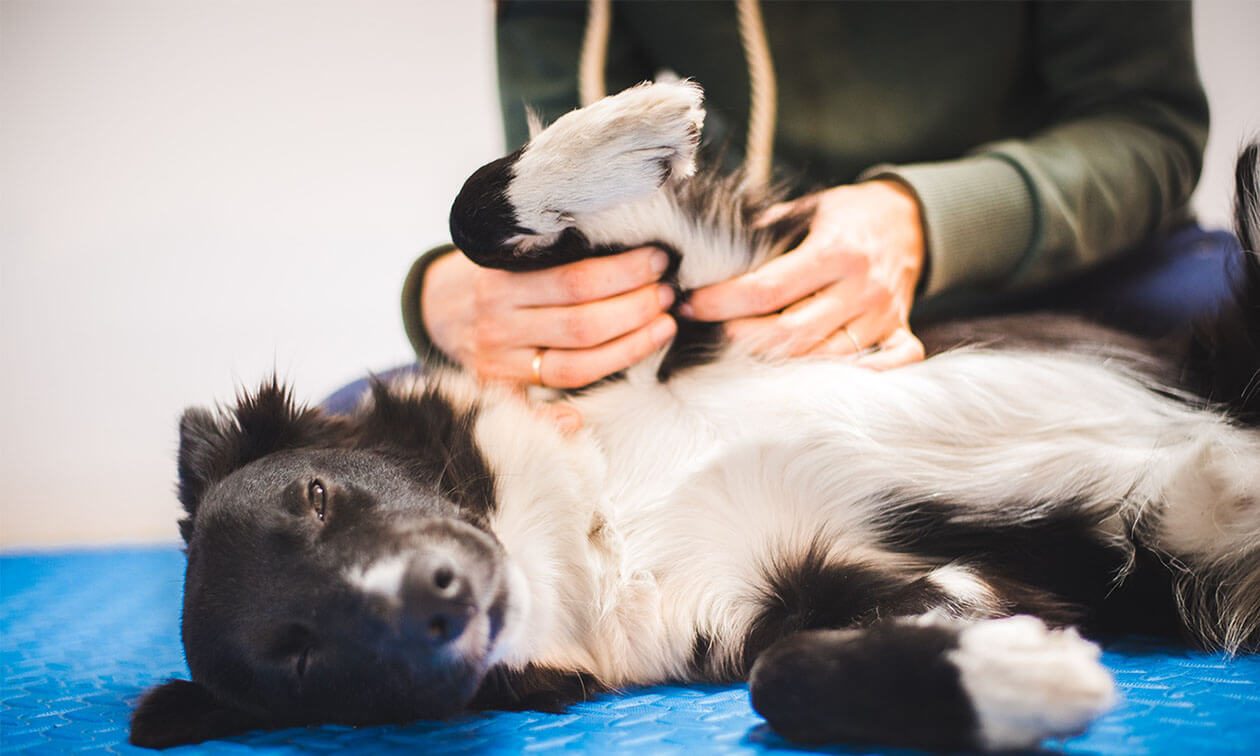It may seem strange to think about physical therapy for your dog. Just like people, dogs have bones, muscles, ligaments, joints, and other body parts that keep them mobile. When those are injured, stressed, have surgery or with age, physical therapy can often be used to improve mobility, function, and pain. Senior dogs who have difficulty getting up when lying on the floor may need more strength in certain parts of their legs. A broken bone in a young dog may heal just fine, but the surrounding muscles can tighten during that process, making the area stiff and tight. These are just two examples where physical therapy could make a difference in a dog's quality of life. Read on to learn more about physical therapy for dogs.
What Is Physical Therapy for Dogs (and Why Is It Helpful)?
There are endless methods and techniques a veterinary physical therapist can use to formulate the best treatment plan for your dog. The goal is to expedite your dog's recovery from an injury or surgery, decrease pain, and weight loss. It will improve strength, flexibility, endurance, and function.
Some of the standard treatment options include:
- Massage therapy
- Passive range of motion exercises (PROM)
- Chiropractic techniques
- Exercises (using exercise balls, balance blocks, or wobble boards) that increase movement, muscle strength, balance, and flexibility
- Weight and resistance training
- Gait training
- Laser therapy
- Cold and heat therapy
- Therapeutic ultrasound
- TENS machines (neuromuscular stimulation)
- Acupuncture
- Hydrotherapy (pool or water treadmill)
Medical Reasons Your Dog May Benefit from Physical Therapy
There are many instances where physical therapy can help your dog through illness and injury.
- Recovering from orthopedic surgery
- Recovering from soft tissue surgery involving the muscles or tendons
- Soft tissue injury
- Neurological disease
- Times your dog exhibits pain when moving different parts of their body
For some surgical procedures, it may be recommended that your dog has pre-habilitation (pre-hab). This is physical therapy that starts about six weeks before surgery. The benefits of pre-hab include:
- Helping with weight loss, if needed
- Conditioning and strengthening the body
- Acclimation to exercises and equipment before surgery
- Improved transition to physical therapy post-op
- Improved post-op recovery
Dog Physical Therapy for Mobility
Senior dogs often experience a loss of mobility as they age. On the opposite end of the spectrum, dogs participating in canine athletics may overexert their muscles. Physical therapy can be helpful in both of these situations.
Your dog may not have a specific health issue, but if you notice any of the following changes in their movement and behavior, they may benefit from physical therapy.
- Difficulty rising after sitting or lying down
- Avoidance of, or hesitation on, stairs
- Stiffness
- Lagging behind on walks
- Limping or changes in gait
- Showing signs of pain such as decreased appetite, avoiding touch in certain areas, vocalization, or extended periods of rest
If you notice any of these changes, it's important to have your veterinarian perform a complete physical examination and diagnostic workup. Even if your dog doesn't have a specific medical condition, the evaluation still helps your veterinarian determine whether physical therapy could be helpful. A referral from your veterinarian is often required for a veterinary physical therapist.
What Happens in Dog Physical Therapy Sessions?
An assessment is performed at the first visit to determine if physical therapy is right for your dog and what techniques and treatments will benefit them the most.
The initial assessment involves a physical exam to evaluate your dog's gait, range of motion, and muscle mass. Your dog will also be put through a series of tests to evaluate their strength, joint pain or dysfunction, and any nerve dysfunction. The veterinary physical therapist will also gather observations you've made about your dog's gait and movements, behavior changes, and body language.
Depending on your dog's needs, they will have daily or weekly sessions for five to ten weeks. These sessions range from 30 to 60 minutes. During a session, the veterinary physical therapist and their team will take your dog through the treatment program's various aspects. They'll do this in a positive way, trying to not cause stress or discomfort. Sometimes, you may be involved in the session to help guide and encourage your dog. They may use treats and toys as motivation as well.
In addition to the clinic sessions, you will likely be given exercises to do with your dog at home. Your veterinary physical therapist will walk you through exactly what you need to do. It's important to understand what's required, what to avoid, and how to tell if you're pushing your dog too hard.
How Is Veterinary Physical Therapy Different?
Your regular veterinarian is essential for diagnosing, treating, and managing the pain associated with conditions that benefit from physical therapy. However, a specialist is needed when it comes to using physical movement as a form of treatment to improve your dog's overall function. This is best done by a veterinarian who has been formally trained in veterinary rehabilitation therapy and has extensive knowledge of anatomy. They will also have access to different resources such as underwater treadmills.
Physical therapy can be a fantastic addition to your dog's recovery plan after illness or injury and their preventive care plan as they grow and age. Talk with your veterinarian about your dog's current needs and how physical therapy could benefit them in the future. They will be able to recommend a local veterinary physical therapist.
ZPC-02517



